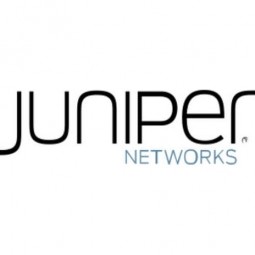技术
- 网络安全和隐私 - 恶意软件保护
- 网络安全和隐私 - 网络安全
适用行业
- 建筑物
- 建筑与基础设施
用例
- 假冒产品识别
- 篡改检测
服务
- 云规划/设计/实施服务
- 系统集成
关于客户
本案例研究中的客户是一家领先的在线文件共享和内容管理服务提供商。它们服务于企业和消费者市场,支持数百万用户和数万家公司。该公司致力于为客户(包括各种规模的企业)提供安全可靠的服务。他们不断寻找增强安全措施并确保客户数据安全的方法。该公司还致力于通过提供增值服务来扩大收入和毛利率。
挑战
该公司是一家领先的在线文件共享和内容管理服务公司,目前正面临着一项重大挑战,即新的威胁载体:云服务提供商提供的文件共享服务。公司员工使用这些服务与外部各方协作和共享文件,这对网络安全构成了风险。该公司特别担心像 DropSmack 这样的恶意程序,它们会利用文件共享服务窃取数据并传播恶意软件,从而绕过组织的预防基础设施。该公司旨在将其服务定位为面向注重安全的客户的企业级、高度安全的解决方案,并创建增值的高级安全文件服务以扩大收入和毛利率。
解决方案
该公司评估了多种选择,包括 Cyphort 的自适应检测结构 (ADF) 和其他更昂贵的基于设备的选项。他们需要一种适合其 SaaS 业务模式的解决方案,这需要一种灵活、可扩展的解决方案。该公司的关键要求包括检测高级装甲恶意软件、基于 API 的集成、可扩展的扫描引擎、与基础设施的集成以及基于使用的许可。该公司在其环境中实施了作为虚拟机运行的 ADF SmartCore 软件。他们利用开放 API 架构并将文件提供给 SmartCore 恶意软件检测引擎。当 SmartCore 开放 API 返回检测结果时,该公司可以隔离恶意文件。ADF 开放 API 架构还提供了对管理和报告功能的访问,然后公司可以将其与第三方安全管理工具集成。
运营影响

Case Study missing?
Start adding your own!
Register with your work email and create a new case study profile for your business.
相关案例.

Case Study
Energy Saving & Power Monitoring System
Recently a university in Taiwan was experiencing dramatic power usage increases due to its growing number of campus buildings and students. Aiming to analyze their power consumption and increase their power efficiency across 52 buildings, the university wanted to build a power management system utilizing web-based hardware and software. With these goals in mind, they contacted Advantech to help them develop their system and provide them with the means to save energy in the years to come.

Case Study
IoT System for Tunnel Construction
The Zenitaka Corporation ('Zenitaka') has two major business areas: its architectural business focuses on structures such as government buildings, office buildings, and commercial facilities, while its civil engineering business is targeted at structures such as tunnels, bridges and dams. Within these areas, there presented two issues that have always persisted in regard to the construction of mountain tunnels. These issues are 'improving safety" and "reducing energy consumption". Mountain tunnels construction requires a massive amount of electricity. This is because there are many kinds of electrical equipment being used day and night, including construction machinery, construction lighting, and ventilating fan. Despite this, the amount of power consumption is generally not tightly managed. In many cases, the exact amount of power consumption is only ascertained when the bill from the power company becomes available. Sometimes, corporations install demand-monitoring equipment to help curb the maximum power demanded. However, even in these cases, the devices only allow the total volume of power consumption to be ascertained, or they may issue warnings to prevent the contracted volume of power from being exceeded. In order to tackle the issue of reducing power consumption, it was first necessary to obtain an accurate breakdown of how much power was being used in each particular area. In other words, we needed to be able to visualize the amount of power being consumed. Safety, was also not being managed very rigorously. Even now, tunnel construction sites often use a 'name label' system for managing entry into the work site. Specifically, red labels with white reverse sides that bear the workers' names on both sides are displayed at the tunnel work site entrance. The workers themselves then flip the name label to the appropriate side when entering or exiting from the work site to indicate whether or not they are working inside the tunnel at any given time. If a worker forgets to flip his or her name label when entering or exiting from the tunnel, management cannot be performed effectively. In order to tackle the challenges mentioned above, Zenitaka decided to build a system that could improve the safety of tunnel construction as well as reduce the amount of power consumed. In other words, this new system would facilitate a clear picture of which workers were working in each location at the mountain tunnel construction site, as well as which processes were being carried out at those respective locations at any given time. The system would maintain the safety of all workers while also carefully controlling the electrical equipment to reduce unnecessary power consumption. Having decided on the concept, our next concern was whether there existed any kind of robust hardware that would not break down at the construction work site, that could move freely in response to changes in the working environment, and that could accurately detect workers and vehicles using radio frequency identification (RFID). Given that this system would involve many components that were new to Zenitaka, we decided to enlist the cooperation of E.I.Sol Co., Ltd. ('E.I.Sol') as our joint development partner, as they had provided us with a highly practical proposal.

Case Study
Intelligent Building Automation System and Energy Saving Solution
One of the most difficult problems facing the world is conserving energy in buildings. However, it is not easy to have a cost-effective solution to reduce energy usage in a building. One solution for saving energy is to implement an intelligent building automation system (BAS) which can be controlled according to its schedule. In Indonesia a large university with a five floor building and 22 classrooms wanted to save the amount of energy being used.

Case Study
Powering Smart Home Automation solutions with IoT for Energy conservation
Many industry leaders that offer Smart Energy Management products & solutions face challenges including:How to build a scalable platform that can automatically scale-up to on-board ‘n’ number of Smart home devicesData security, solution availability, and reliability are the other critical factors to deal withHow to create a robust common IoT platform that handles any kind of smart devicesHow to enable data management capabilities that would help in intelligent decision-making

Case Study
Splunk Partnership Ties Together Big Data & IoT Services
Splunk was faced with the need to meet emerging customer demands for interfacing IoT projects to its suite of services. The company required an IoT partner that would be able to easily and quickly integrate with its Splunk Enterprise platform, rather than allocating development resources and time to building out an IoT interface and application platform.








